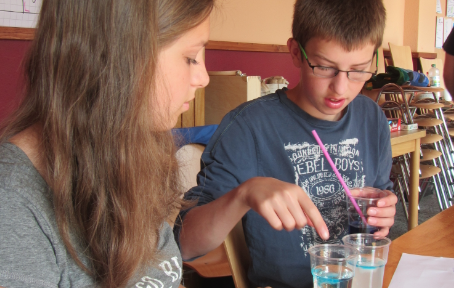I recently, via the blogpost “lessons from a toy” by Eyler (2015), came across the article “The Double-edged Sword of Pedagogy: Instruction limits spontaneous exploration and discovery” by Bonawitz, Shafto, Gweon, Goodman, Spelke and Schulz (2011). The article sets out to find out whether children primarily learn from instruction or from exploration. 85 pre-schoolers are divided into four groups that are exposed to a toy under different conditions.
- In the pedagogical condition, the experimenter said “Look at my toy! This is my toy. I’m going to show you how my toy works. Watch this!” and then demonstrated one function of the toy. She then exclaimed “Wow, see that? This is how my toy works!” and demonstrated the function again.
- In the interrupted condition, the experimenter began the same way, but after the first demonstration came up with an excuse and left, without reinforcing the message and demonstrating again.
- In the naive condition, the experimenter seemed to accidentally discover the function of the toy.
- In the baseline condition, the experimenter just presented the toy without demonstrating its function.
In all four groups, the experimenter then left the toy with the kid and said “Wow, isn’t that cool? I’m going to let you play and see if you can figure out how this toy works. Let me know when you’re done!”. When the child stopped playing with the toy, the experimenter asked whether the child was done, and only when it answered “yes”, the experiment was concluded.
Analysis of the time each child spent with the toy and of the number of functions a child discovered is fascinating. Children who had been in the pedagogical condition group spent less time with the toy, and didn’t explore nearly as much as the kids in the other groups when left to their devices. Instead, they spent the little time they spent on the toy mainly on the one function that had been demonstrated to them. Children in the baseline group, on the other hand, spent the most time with the toy and discovered the most different functions.
In a second study, the authors place children in situations where they overhear the experimenter explain the toy either to another child or to an adult. They find that when kids overheard the toy being explained to another child, the effect was similar to when the toy was explained to them directly, whereas when the toy was explained to a grown-up, they were more free in their exploration of the toy later on. In their words, “preschool children rationally extend their assumptions about pedagogical situations to contexts in which they overhear instruction to comparable learners”.
To conclude, the authors state that “the current results suggest that instruction leads to inductive biases that create a genuine “double-edged” sword: teaching simultaneously confers advantages for learning instructed information and disadvantages for learning untaught information. Thus, the decision about how to balance direct instruction and discovery learning depends largely on the lesson to be learned.”
And while this study was done on pre-schoolers, I think there is a lot we can learn from it for higher education, too. Yes, of course there is some information that all our students need to learn and for which direct instruction might be the best way forward. But if we want to educate future researchers, then shouldn’t our labs be a lot more about exploration and a lot less about following instructions? Shouldn’t the questions we ask be a lot more open? Shouldn’t there be time for exploration and discovery?
—
Bonawitz, E., Shafto, P., Gweon, H., Goodman, N., Spelke, E., & Schulz, L. (2011). The double-edged sword of pedagogy: Instruction limits spontaneous exploration and discovery Cognition, 120 (3), 322-330 DOI: 10.1016/j.cognition.2010.10.001
